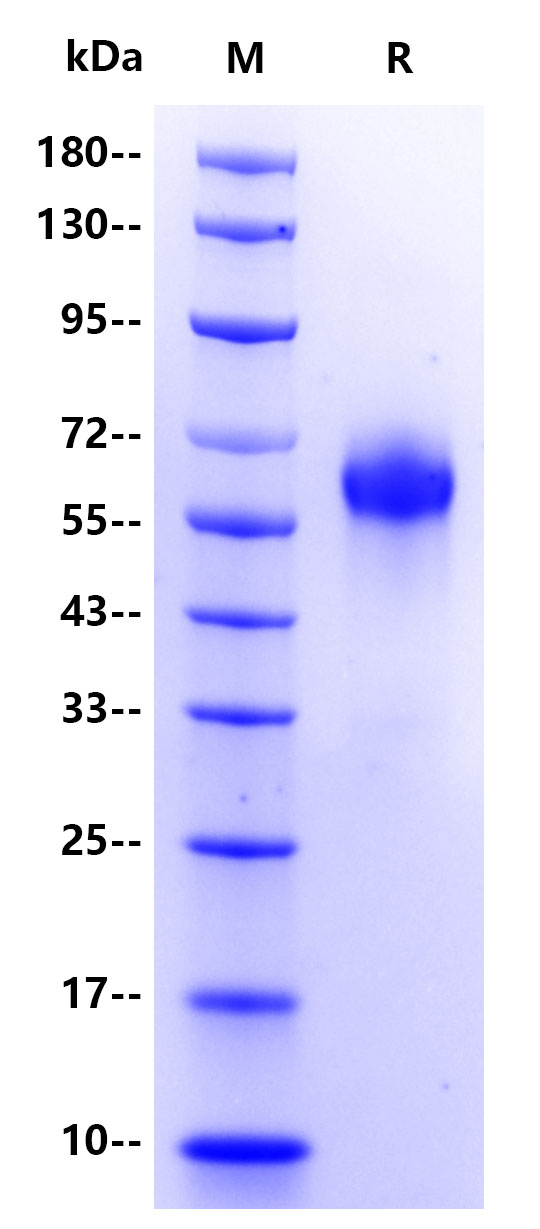Protein sequence(Q13219, Pro1200-Gly1627, with C-10*His)
PAEQSCVHFACEKTDCPELAVENASLNCSSSDRYHGAQCTVSCRTGYVLQIRRDDELIKSQTGPSVTVTCTEGKWNKQVACEPVDCSIPDHHQVYAASFSCPEGTTFGSQCSFQCRHPAQLKGNNSLLTCMEDGLWSFPEALCELMCLAPPPVPNADLQTARCRENKHKVGSFCKYKCKPGYHVPGSSRKSKKRAFKTQCTQDGSWQEGACVPVTCDPPPPKFHGLYQCTNGFQFNSECRIKCEDSDASQGLGSNVIHCRKDGTWNGSFHVCQEMQGQCSVPNELNSNLKLQCPDGYAIGSECATSCLDHNSESIILPMNVTVRDIPHWLNPTRVERVVCTAGLKWYPHPALIHCVKGCEPFMGDNYCDAINNRAFCNYDGGDCCTSTVKTKKVTPFPMSCDLQGDCACRDPQAQEHSRKDLRGYSHGGGGGSHHHHHHHHHH
>95% by SDS-PAGE
12 months from date of receipt, -20 to -70 °C as supplied.
1 month, 2 to 8 °C under sterile conditions after reconstitution.
Please avoid repeated freeze-thaw cycles.
Pappalysin-1, also known as pregnancy-associated plasma protein A, and insulin-like growth factor binding protein-4 protease is a protein encoded by the PAPPA gene in humans. PAPPA is a secreted protease whose main substrate is insulin-like growth factor binding proteins. Pappalysin-1 is also used in screening tests for Down syndrome.PAPPA's proteolytic function is activated upon collagen binding. It is thought to be involved in local proliferative processes such as wound healing and bone remodeling. Low plasma level of this protein has been suggested as a biochemical marker for pregnancies with aneuploid fetuses (fetuses with an abnormal number of chromosomes).
